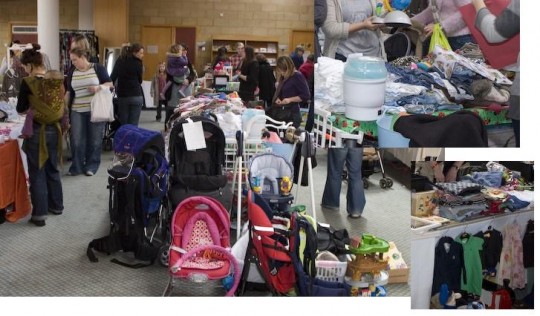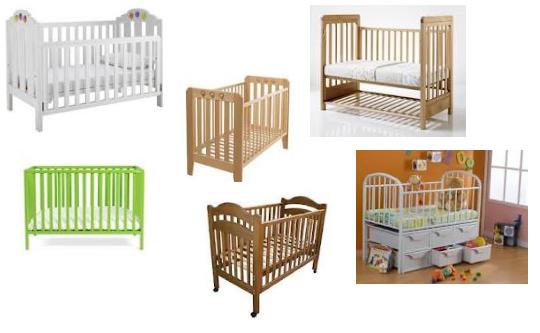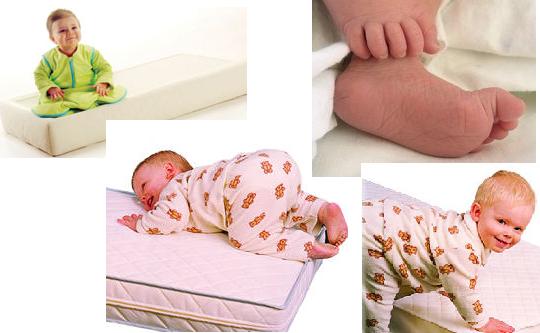 Sleep tight, sleep right. I think that might actually be an advertising slogan my swiss cheese memory has dredged up from somewhere. But it is what pops into my mind whenever I think about babies, sleeping and cots.
Sleep tight, sleep right. I think that might actually be an advertising slogan my swiss cheese memory has dredged up from somewhere. But it is what pops into my mind whenever I think about babies, sleeping and cots.
Hindsight is a wonderful thing. If only I knew way back when my son was born what I know now. Choosing the right one when buying a cot was one such minefield. I can see now that I spent far more than I needed to simply because I didn’t know what to look for.
And, I didn’t know how to find what I needed to look for. Every article I read seemed to lack actual specifics. Make sure baby can’t fit their head through the railings. That’s good advice, but without an actual baby to put in the cot, how exactly do you do that?
According to the consumer publication Which? the top five considerations most parents have when buying a cot are, in order of importance, safety, price, whether it can be converted into a cotbed, whether it has a drop-side, and durability.
Drawing on the PlayPennies collective wisdom, here’s the best advice and tips I could gather together. These should help any first time parent to save a ton of cash when buying a cot. If I’d known all this I could have snapped up something for £70 instead of forking out nearly £300. Live and learn!
 Buying second-hand and hand me downs
Buying second-hand and hand me downs
Not everyone feels comfortable with a used cot. However, as long as you buy a new mattress for it, and make some careful checks, you can save a lot of cash this way when buying your cot.
In fact, according to the PlayPennies parents I polled, many of those who bought second-hand or were given cots found they appeared barely used and in such good condition it was hard to tell them from brand new.
Good places to look for cots are at baby sales, such as those organised by the NCT, local church and community groups, and other mother and baby sales in your area. To find out if any are happening, take a look at library noticeboards, and the noticeboard at your GP's surgery. Also Surestart centres. Baby playgroups often have a noticeboard or table of flyers.
Everything I’ve read, and everyone I’ve talked to have said that, no matter how beautiful it might be, you just have to avoid cots and bassinets that have been passed down through generations of the family. They simply won’t be up to modern safety standards.
Which brings us nicely to the subject of cot safety – what exactly should you be looking for?
 Safety standards and issues for cots
Safety standards and issues for cots
First, and foremost, the latest safety standard for cots in the UK is, according to the British Standards Association, BS EN 716:2008. Don’t buy anything second hand if it doesn’t have that number.
Next up, that issue of bar spacing I mentioned before. Turns out that the bars should be no more than 6.5cm apart. So if you’re going to a second hand (or pre-loved) sale, it might be worth your peace of mind to take a tape measure along. While you are measuring the cot, check the distance between the top of the mattress and the top of the cot; it shouldn’t be less than 50cm.
Think about how much work you are willing to put in. A cot with peeling or chipped varnish or paint may be even cheaper as the new owner will have to strip and repaint it. Also you’ll need to remove any stickers or other types of decoration if they’re starting to come off. Personally I’d probably remove them anyway. As these things get older the adhesive also ages and becomes less stable. I wouldn’t want to risk the possible choking hazard they might become.
Mum of one Maria also gave me another tip when looking at second hand cots. Check to see what the sides look like on the inside of the cot. Has a previous enterprising youngster managed to make themselves any hand or footholds that could aid future escapes?
Interestingly that would never have occurred to me! But it does make sense. Older babies will try to climb so it is probably worth keeping this in mind. You don’t want them climbing and toppling out of the cot.
Cot mattress
I wouldn’t use a second-hand mattress, and I think that the current advice is to avoid them even where you are passing from one child to their sibling. You’ll need to measure the cot, especially if you’re buying a second hand one.
Cots come in lots of different sizes, and there’s a bit of a difference between standard sizes here in the UK, and continental sizes (which are a few centimetres wider).
 Cot features
Cot features
Now, speaking from personal experience, a cot that you can lower the base as the baby gets older is a must. Until they’re sitting up unaided, you can use the highest setting and it really does save your back. Our cot only had two settings, high and low. And I guess that’s pretty much OK but if I was buying again, I’d look for something with a few more settings.
What about drop sides? In the Which survey this was rated quite highly, and I frankly couldn’t consider a cot without them for ease of use. But in the US they’re banning drop sides! It is a bit confusing this one, because our safety standards are different to the US, and presumably much higher. There haven’t been any reported deaths here from defective drop sides, and there’s no plans to ban them.
I’d probably be cautious and find out what a cot was made of I was buying one second hand.
Tell us about your experience
Did you have fun buying a cot, or like me, did you find it a torturous affair? I didn't go for a cot bed but I wonder if I'd have been better get one. If you bought a cot-bed what was your experience like?


 Safety standards and issues for cots
Safety standards and issues for cots Cot features
Cot features














Comments